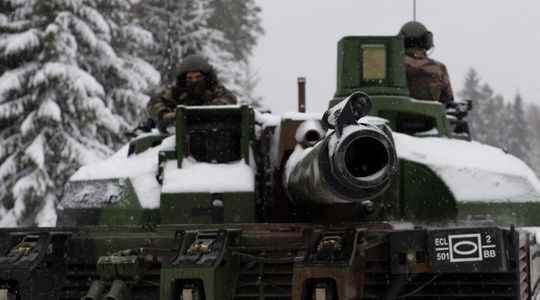Will Putin stop at Ukraine? The question resonates worryingly in Poland and in the Baltic states, which were also part of the Soviet bosom. Immediately after the Russian attack on their neighbour, Lithuania – bordering Belarus and the Russian enclave of Kaliningrad – declared a state of emergency. At the same time, the Baltic States, Poland and other Eastern European countries have requested the activation of Article 4 of NATO, allowing emergency consultations between allies when a member is threatened. “The invasion of Ukraine is the realization of their own fears vis-à-vis Moscow”, summarizes Thibault Fouillet, researcher at the Foundation for Strategic Research (FRS).
In the background, the fear that history will repeat itself. First occupied by Imperial Russia, Lithuania, Latvia and Estonia had enjoyed only a brief period of independence between the two world wars, before being annexed by Stalin in 1940 – and regaining their sovereignty during the fall of the Soviet Union in 1991. Same concern in Warsaw. “Over the centuries, Poland has been invaded by Russia on multiple occasions, recalls Aleks Szczerbiak, professor of political science at the University of Sussex. Beyond the post-Soviet legacy, there is great mistrust history of Russian expansionism.”
“It is necessary to foresee that Putin will want to continue his aggressive policy, declared the Polish Prime Minister, Mateusz Morawiecki, in the press. He started in Georgia, now Ukraine, the next objective could be the Baltic countries, the Poland, Finland or other countries on the eastern flank.” One of the most feared scenarios in the region is a Russian offensive in the Suwalki Gap. This strip of land of a hundred kilometers stretches to the border between Poland and Lithuania, caught between Belarus and the heavily militarized Russian enclave of Kaliningrad. “It’s the Achilles’ heel of the Baltics within NATO, points out Céline Bayou, associate researcher at Inalco. If Russia decided to do so, it would be easy for it to cut the land connection between the Baltic countries and the other members of the Alliance.” And thereby complicate any military assistance.
Military reinforcement
To deal with any eventuality, Poland and the Baltic States have repeatedly called for the strengthening of NATO’s eastern flank. Since 2017, 4,500 men have been deployed there. And two days before the Russian offensive, Joe Biden announced that he was modifying the deployment of American forces in Europe, sending 800 soldiers and eight additional F-35 planes to the Baltic countries, as well as 32 Apache helicopters distributed between these three states and Poland. .
What dissuade the head of the Kremlin, whose 30,000 soldiers are deployed in neighboring Belarus? “Our membership in NATO is a guarantee of security, but Putin has shown that he does not hesitate to use his military tool, underlines Olevs Nikers, president of the Baltic Security Foundation, in Riga (Latvia).
For our military deterrence to be credible, it therefore appears necessary to increase the forces of the Alliance in the region.” Anxious to reassure his allies, NATO Secretary General Jens Stoltenberg announced on Friday 25 February the activation, for the first time, of the Alliance Response Force – a multinational group of 40,000 troops, comprising 8,000 troops that can deploy in two to three days.
On the Ukrainian front, Poland and the Baltic countries were also among the first to decide to deliver arms to Kiev with, from the end of January, the dispatch of anti-tank missiles and anti-aircraft systems. In the event of a Ukrainian military defeat, “there will certainly remain forms of guerrilla warfare in the country,” said Michal Baranowski, director of the Warsaw office of the German Marshall Fund. Poland could then, according to this researcher, serve as a rear base for these fighters.
